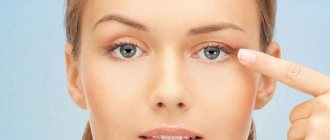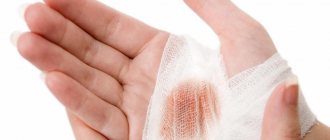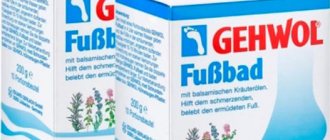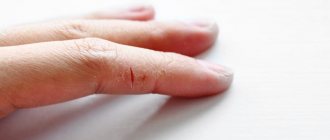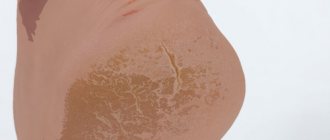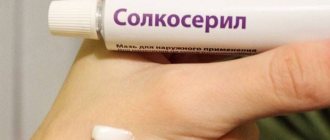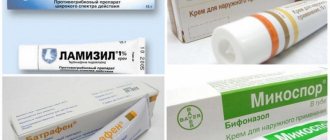Most often, cracks appear when the baby does not grasp the nipple correctly or the mother behaves incorrectly at the time of feeding. Let's take a closer look at both of these factors.
Incomplete nipple latching
The sucking reflex in children begins to form in the womb. Therefore, the process of eating milk from the breast is a reflex; within a few minutes after birth, a newborn is able to grab the nipple and suck out a few drops of milk from there.
But a small newborn baby does not always latch onto the breast correctly. If it is not guided, the delicate skin of the nipple may be damaged.
Here are some signs you can use to understand that your baby is sucking incorrectly:
- Mother feels pain during feeding process
- The baby holds only the nipple itself in his mouth.
- The areola is not captured and remains outside the baby's mouth.
If the breast is latched incorrectly, cracks in the nipple will soon appear, making breastfeeding difficult or completely impossible in the future.
Incorrect cessation of feeding
It happens that children fall asleep with a pacifier in their mouth. It may seem to the mother that the baby is already full and is not suckling; she tries to force him off the breast. But at this moment the muscles reflexively contract, the child does not want to let go of his “bowl of food.” If at this moment you sharply pull out the nipple, cracks can easily form on it.
Therefore, doctors do not recommend taking away the nipple from a baby, even a sleeping one; he can eat in his sleep. When the baby is full, the breast itself will fall out of his mouth.
If you need to leave urgently, you need to lightly put your little finger in your mouth. Then the tension in the muscles and jaws weakens, and the nipple is easily and safely pulled out.
Errors when pumping
With the method of feeding the baby on demand, most women do not need to express milk. But there are times when mom needs to leave for a few hours, or even the whole day. There is a need to express the breast.
During the pumping process, you need to press on the breast and areola; if you press directly on the nipple, cracks will appear on it.
A breast pump also often leads to cracks in the nipple if you turn it on at full strength. First, microscopic defects of the epithelium appear, which can later turn into full-fledged cracks.
Care errors
During the period of breastfeeding, women should keep their breasts clean, but it is advisable not to overdo it with hygiene. A shower once a day is enough to avoid exposing either yourself or the baby to infection. It is not recommended to constantly wipe nipples with soap or alcohol solution.
The skin has glands that constantly produce protective lubricants. It makes the epidermis softer, has natural antiseptic properties, and helps wounds and minor injuries heal faster. If you constantly wash off this lubricant, the surface of the skin is deprived of its normal natural protection.
Cracked nipples may also appear due to other factors associated with errors in care:
- Too dry skin on the nipple and areola.
- Uncomfortable synthetic bras that chafe the skin.
- Thrush or candidiasis in the baby's mouth.
- Allergy or hypersensitivity to laundry detergents, soaps, etc.
- Spontaneous leakage of milk from the breast.
Pacifiers and nipples on bottles.
Nipples and pacifiers that a mother gives to her baby can also cause nipple cracks. The techniques for sucking artificial substitutes and the mother's nipple are slightly different. But when constantly replacing one thing with another, the child cannot find his way. By using the same latching methods on the nipple as on the cowgirl, the baby can damage it.
Here's how different sucking techniques differ:
- To grab a pacifier, the baby does not need to open his mouth wide, unlike grasping the mother's nipple with the areola.
- When suckling the breast, the baby presses it with his tongue, which promotes better milk separation. When consuming food from a bottle, it compresses the papilla with its jaws.
- The baby holds the pacifier in the area of the hard palate. During breastfeeding, the nipple is located in the center of the oral cavity, covered by the tongue.
As you can see, the techniques for gripping a rubber or silicone nipple and a mother’s nipple are completely different. With regular use of these aids, the baby begins to confuse them, the mother's breast suffers and nipple cracks form.
Peeling skin during pregnancy: reasons
During a wonderful time of pregnancy for every woman, the expectant mother undergoes a serious restructuring of her body. It adapts as much as possible to the needs of the growing baby, and in the last trimester prepares for childbirth. A pregnant woman experiences external and internal changes.
And pregnancy also means, one way or another, stress, poor health, and fatigue. And all these factors affect the condition of the skin not in the best way.
Why does skin peel during pregnancy?
- Natural need for water
- Physical changes
- Lack of vitamins and microelements
- Stress
- Improper care
- Hormonal changes
Expectant mothers need to take into account that the volume of liquid consumed now goes not only to her needs, but also to the needs of the baby. From the second trimester, amniotic fluid will begin to form, and the lack of water in the body can become noticeable and manifest itself, among other things, as the problem of flaky skin.
When a pregnant woman’s figure begins to change, her breasts enlarge, her hips expand, her belly with the baby inside grows, and her skin stretches. This process may be accompanied by itching and flaking of the skin of the abdomen. During pregnancy, breasts often peel off due to secretions and colostrum released from the nipples.
The expectant mother should carefully monitor her diet and eat enough nutrients for the health of her unborn child. Vitamin deficiency, especially a lack of vitamins A, E, B, leads to dryness of the epidermis and is manifested by peeling of the skin of the face, hands and feet during pregnancy.
It's normal to feel anxious during pregnancy. But not in the case when stress is accompanied not only by psychological discomfort, but also by physical manifestations. When stressed during pregnancy, the skin on the arms and legs peels and severe itching occurs.
Insufficient hygiene, especially if pregnancy occurs in a hot climate and during the warm season, leads to skin irritation, dryness, and flaking.
As a result of changes in hormonal levels, the secretion of sebum, which is necessary for sufficient hydration of the skin, is disrupted. If the epidermis is excessively dry, peeling of the skin may begin.
Sometimes unwanted hormonal changes occur against the background of disturbances in the functioning of internal organs and systems. Pregnant women may experience abnormalities in the functioning of the endocrine system, which lead to a decrease in estrogen levels (this hormone, among other things, is responsible for the good condition of the skin). With hypothyroidism, the thyroid gland begins to produce less hormones, which is also reflected in the form of peeling and itching of the skin. Lack of prolactin (the hormone plays an important role during lactation) is manifested by increased sweating, which often causes itching and peeling of the skin of the abdomen and body during pregnancy. Also, a large group of causes of skin peeling are specific dermatoses of pregnant women, manifested by itching, rashes, dryness and flaking of the skin.
Should I stop breastfeeding if I have cracks?
No, this is completely unnecessary if the cracks are not caused by infection or do not become infected after they appear. Of course, if the damage is deep, blood or ichor is oozing from the injured nipple, you should not give it to the child. It's better to wait for complete healing. The same applies to inflammation, conditions in which the milk is contaminated or the baby can become infected through contact with the nipple. In such cases, you need to see a doctor, consult with him about taking medications and the possibility of continuing feeding. You should not neglect a visit to the doctor; each case is individual and needs separate consideration. If there is no infection or extensive damage, then there is no prohibition on feeding even if there are cracks. But there are ways to relieve pain and reduce the risk of further injury to the chest.
Peeling nipples during pregnancy
Already in the first weeks, many pregnant women notice changes in their breasts. She becomes too sensitive, the mammary glands become enlarged, and discharge from the nipples appears. And at the same time, the nipples can itch and peel. This is not a pathology, but one of the most common conditions found in pregnant women.
What causes peeling of the breasts and nipples?
- With nipple discharge
- With an allergic reaction
- With increasing breast size
Even during pregnancy, the body begins to prepare for the birth of a child and the upcoming feeding. Small white bubbles appear on the nipple halo, secreting secretions. It lubricates the nipple to protect against dryness.
Excessive secretion and insufficient hygiene lead to irritation of the breast skin, itching, and peeling.
In the last trimester, colostrum begins to be released from the mammary glands (this is especially true for women who have previously given birth and have developed thoracic ducts). The liquid dries on the breasts, resulting in a feeling of tight skin, itching, and peeling in the nipple area.
Increased skin sensitivity during pregnancy can cause allergic reactions to clothing, especially synthetic ones. On the chest, an allergy will manifest itself as itching, irritation, dryness and flaking. The same reaction can be caused by a hygiene product: shower gel or body cream.
During pregnancy, the mammary glands enlarge and in the last trimester they are filled with milk for future feeding. With breast enlargement, the skin stretches quickly and unevenly, which causes itching, dryness and flaking.
What to do if your nipples peel during pregnancy?
To eliminate unpleasant sensations, careful hygiene and care is sufficient. Breasts and nipples should be washed regularly with warm water (can be wiped with a damp towel) and wiped dry.
To prevent allergies, it is better to choose cotton underwear and change your bra size in a timely manner.
Lubricate the skin around the nipples with a hypoallergenic remedy for dry skin. La-Cri MAMA emulsion is perfect for these purposes. It not only moisturizes and softens the skin, but also effectively fights the formation of stretch marks that can appear on the breasts as a result of breast enlargement.
If peeling nipples during pregnancy are very disturbing, does not go away even with proper care, or is accompanied by other symptoms: chest pain, change in skin color, increased body temperature, purulent or bloody discharge from the nipples, general malaise - this is a reason to urgently consult a doctor.
Complications of cracked nipples
Cracked nipples during breastfeeding can greatly complicate the process of feeding the baby itself, which creates the need to switch to artificial formula without treating this disease.
Cracks in the nipples of the breast can be complicated by the penetration of infection into the wounds of the nipple, forming severe catarrhal or purulent inflammation of not only the nipple, but also the entire mammary gland (mastitis).
When Candida albicans gets on a wound, it causes the development of nipple thrush, which makes it impossible to continue feeding the baby, since the risk of infection is high.
Cracked nipples can facilitate the transmission of infections from mother to baby.
Experts' opinion
An important component of the emulsion is licorice extract, the anti-inflammatory activity of which has been clinically proven as part of a study of the biological activity of aqueous extracts of chamomile flowers, raspberries, licorice rhizomes and their combinations at the Bashkir State University.[1]
A clinical study of La-Cri products proves their high effectiveness, safety and tolerability for daily skin care of adults and children. The products are recommended by the Union of Pediatricians of Russia and are safe for the delicate skin of the expectant mother.
Crusts on the nipples. Causes of crusts on nipples
Crusts on the nipples are an unpleasant symptom that can cause discomfort and anxiety. The article discusses the main reasons for this manifestation and ways to solve the problem.
Symptoms
The appearance of crusts on the nipples can be noticed upon self-examination. They may appear as small, light-colored particles of a light yellow hue. Such crusts can be found both on the nipples themselves and on the milk pores (these are the holes from which milk comes out during lactation), and on the areolas.
In some cases, the manifestation in question is accompanied by other symptoms, such as discharge from the nipples, increased sensitivity, engorgement and increase in size, breast swelling, a feeling of fullness and heaviness, palpable lumps. Sometimes there is pain, enlargement of regional axillary or cervical lymph nodes, signs of inflammation (hyperemia, redness, swelling), as well as a general deterioration in the woman’s condition. Possible itching, skin rashes, burning.
Causes
The reasons for the appearance of crusts on the nipples can be very diverse. They can be divided into several groups:
- Physiological
- Pathological
Physiological reasons
This group includes factors associated with processes occurring in the body:
- Lactation. During this period, milk is produced, and drops of it may remain on the nipples after feeding and dry out, forming crusts. Also, minor spontaneous discharge is possible between feedings. In addition, milk may be secreted and leaked from the breast in small quantities even after lactation has ended for about six months to a year.
- Normal physiological secretions. They may be present outside the lactation period and not be associated with any abnormalities. But their quantity will be insignificant and minimal, and the leakage usually goes unnoticed and is detected after the discharge has dried and crusts have formed.
- Pregnancy. In its second half, colostrum is released from the nipples, which, when dried, can form yellowish crusts.
- Failure to comply with personal hygiene rules. Crusts that appear on the nipples may be the result of contamination and untimely removal. So, if you shower irregularly and rarely change your underwear, then particles of dirt, sebum and fibers of the fabric from which the bra is made can mix, linger on the most prominent parts of the chest and form crusts.
Peeling of hands during pregnancy
Dry skin occurs on the hands more often than on other parts of the body. This is due to the fact that hands are exposed to constant external influences and are often not protected from the sun and chemicals. The situation worsens during pregnancy, and the skin begins to peel off on the hands and fingers even more actively, up to the formation of cracks and wounds.
Dry hand skin requires a special product, for example, La Cree cream for dry skin, which perfectly softens and nourishes the skin, protecting it from peeling and drying out. And if your hands are already chapped, the cream will have an anti-itching effect, relieve redness and peeling.
Treatment of cracked nipples
Treatment of cracked nipples is carried out at their first appearance, which is aimed at reducing their trauma and excessive drying.
To prevent the nipple area from drying out, you can use both drops of breast milk (this lubricates the nipple after breastfeeding) and various oils (sea buckthorn, olive).
Treatment of cracked nipples includes the use of wound-healing ointments or creams (bepanthen, lanolin), and if wounds become infected, you can use antibacterial ointments (baneocin).
Cracked nipples should be treated using physiotherapy methods that help relieve inflammation and its signs (swelling, pain, redness and dysfunction), and also increases the body’s protective properties, has a bactericidal effect and promotes rapid wound healing. A specialist from Belozerova’s hardware therapy clinic “M-Clinic” will tell you how to treat cracked nipples.
Peeling skin during pregnancy: what to do
- Cleanse skin thoroughly. This is especially true for the breasts and nipples, where secretions are constantly released.
- Drink enough fluids.
- Use special products for dryness and stretch marks, which contain a minimum of chemicals.
- Eat right, take vitamins.
- Wear clothes made from natural fabrics.
It should be understood that if peeling is caused by any abnormalities in the body, eliminating only external manifestations will not be effective. If such disorders are diagnosed by a gynecologist after a regular examination, he will refer the pregnant woman to specialized specialists.
Sources:
- Habiff Thomas P., Clinical Dermatology. Acne-like and papulosquamous dermatoses, publishing house: MEDpress-inform, 2014
- Churolinov Petr, Herbal medicine in dermatology and cosmetics, Medicine and Physical Education Publishing House, 1979
- Schneiderman Paul, Grossman Mark, Differential diagnosis in dermatology. Atlas, Publishing house: Binom, 2017
What are cracks?
It is not at all difficult to distinguish cracked nipples. They resemble a groove or narrow defect in the skin running from the tip of the nipple towards the areola.
Nipple cracks can be single or multiple, thin and rather wide, blue-eyed and located in the superficial layers of the skin. They appear on one or both mammary glands. At first the crack is dry, then ichor or blood begins to flow out of it.
The main symptom, which appears even before visible cracks, is pain when the child touches and sucks the gland.
When pathogenic microbes or fungus get into the cracks of the nipples, they become inflamed and gradually turn into ulcers.
Paget's disease
It is considered a fairly rare form of cancer. With this type of oncology, it is the nipple that is affected, and in some cases, its halo. In the initial stages, symptoms do not attract attention. Peeling and then a small wound may appear near the nipple. This ulcer does not cause pain, but it does not heal for a long time, which, most often, becomes the reason for the patient to consult a doctor. If this does not happen, and the disease continues to progress, then more noticeable complaints appear. All of them, as a rule, relate exclusively to one nipple:
- the sensitivity of this part of the body increases significantly,
- bleeding occurs,
- a man's nipple itches intensely,
- the nipple changes.
Why do halos lighten? Areola (anatomy)
Elliptical areola
The areola roughly outlines the area of the nipple of the mammary gland. The color of the pigment varies among individuals, ranging from light pink to dark brown, depending on the amount of two melanin compounds: eumelanin (brown pigment) and pheomelanin (red pigment).
The size of the areola may change due to hormonal changes caused by menstruation, certain medications, and aging. The areola is usually darker during pregnancy. After childbirth, their original size can be partially or completely restored, but this is individual for each woman.
The size and shape of the areola also varies widely. Women's areolas tend to be larger than those of men and girls before puberty. The areola in most men has a diameter of about 25 millimeters, and in women about 30 millimeters. In some women, the areola can reach ten centimeters. In women with relatively large breasts and in women who are breastfeeding, the size of the areola may exceed 10 cm.
Small bumps on the areola are called Montgomery glands.
The shape of the areola is usually round, but much less often in some men and women it can have the shape of an ellipse.
- St. Petersburg, 1890—1907.
Women's breasts warn of danger
So, what symptoms should be immediately attributed to SOS signals in the female body? Firstly, it is worth mentioning itching in the nipples, which can be a harbinger of a serious and dangerous illness. However, do not panic ahead of time. Sometimes symptoms that seem to be signs of a terrible disease are nothing more than exaggerated female fears.
However, let's understand the intricacies of the female body. Why and for what reason can you experience itchy nipples? Almost every representative of the fairer sex experiences peeling and excessive dryness in this area, regardless of age and social status. Dry nipples are not always a sign of a serious illness, but, undoubtedly, it is a sign that something is wrong in the body, and it is worth taking a closer look at your own health.
If the skin on your nipples is peeling, it may be just a simple lack of vitamins. Urticaria is characterized by similar symptoms. If, in addition to itching, the skin in the chest area becomes covered with spots, most likely you are dealing with this particular disease.
How to get rid of it?
It will not be news that in order to eliminate dryness it is necessary to influence the cause of its occurrence. In the most common situations, breast skin requires proper care. It is worth giving up aggressive detergents and drying lotions, replacing them with delicate cleansing, softening and moisturizing products (foam, milk, creams). Homemade breast masks made from available ingredients will also help with care:
- Oatmeal, milk, honey, butter.
- Banana pulp with olive oil.
- Crushed oatmeal with grated carrots.
At the same time, it is necessary to normalize the drinking regime and the intake of vitamins from food. During breastfeeding, it is recommended to treat nipples with ointments based on medical lanolin and dexpanthenol. This helps eliminate dryness and faster healing of damage. Lotions made from decoctions of chamomile, string, lemon balm, as well as lubricating the skin with almond oil will help relieve itching during pregnancy.
By removing the allergen (underwear, cosmetics), you can eliminate the skin reaction itself, which is the effectiveness of elimination therapy. If the disease has acquired the character of neurodermatitis, then the use of antihistamines and corticosteroids will be required.
The only situation where radical correction is necessary is breast cancer. Unfortunately, in other cases the prognosis becomes disappointing. Surgical removal of the tumor is combined with radiation, hormone and chemotherapy. There are also biological drugs that act on certain receptors on cancer cells.
Hormonal disorders
Testicles, pituitary gland and adrenal glands, the activity of which is directly or indirectly related to the production of sex hormones. If their work fails, then various diseases may develop. As a result, the hormonal balance is disrupted. Testosterone decreases its percentage. Meanwhile, estrogen, known as the female sex hormone, increases. The first bell notifying that just such a process has begun is peeling and itching of the guy’s nipples. Further, the hormonal imbalance will manifest itself more clearly, for example, the process of feminization may begin.
